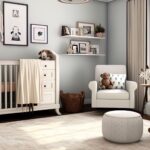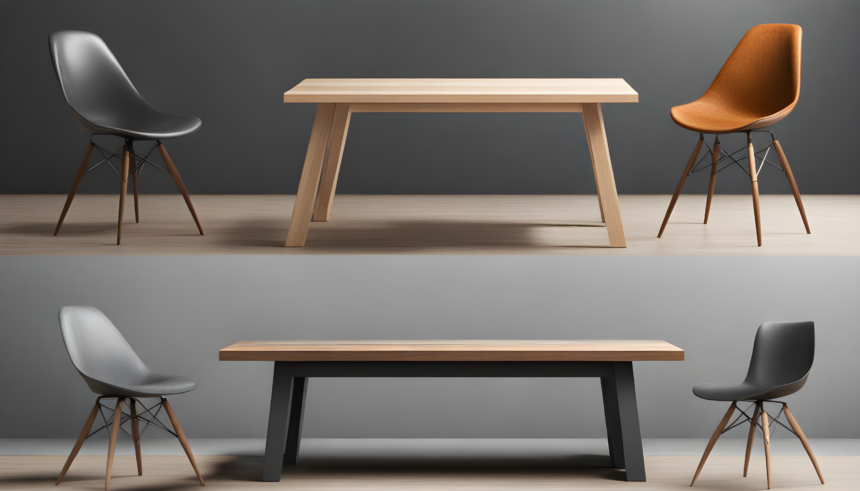When it comes to furnishing your home, durability is a key factor to consider. After all, nobody wants to invest in furniture that won’t stand the test of time. Among the countless options available, two materials often dominate the discussion: wood and metal. In this comprehensive guide, we’ll compare the durability of wood vs. metal furniture.
So, if you’re pondering whether to go with the timeless appeal of wood or the sleek, modern allure of metal, read on. We’ll dive deep into the strengths and weaknesses of both options to help you make an informed decision that suits your style and lifestyle.
Wood Furniture: Timeless Beauty
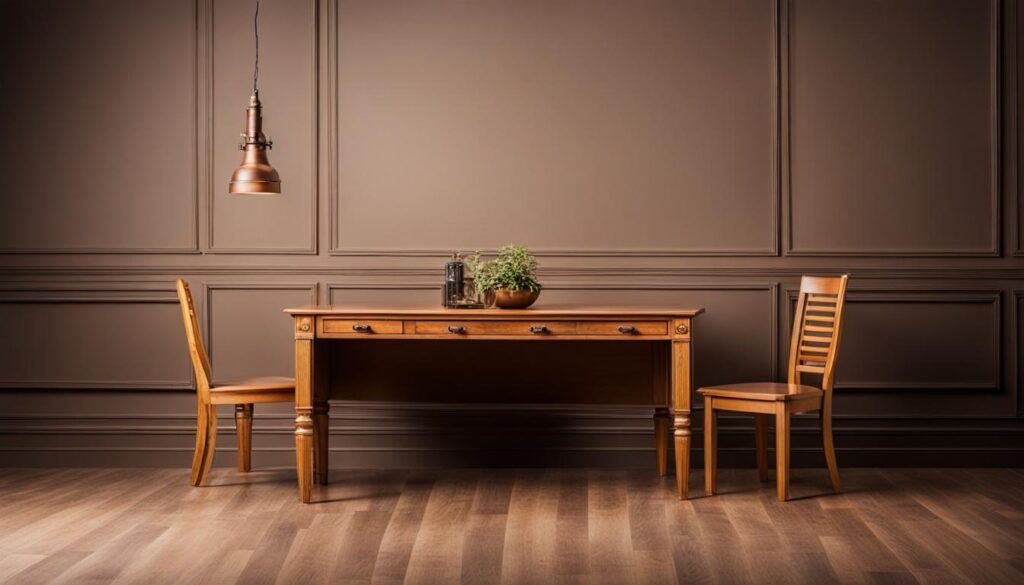
Natural Aesthetics
Wood furniture has an undeniable charm. Its warm, natural look brings a sense of coziness to any room. Whether it’s the rich grain patterns of oak or the smooth finish of cherry wood, each type of wood has its unique character. Unlike metal, wood has a timeless appeal that fits well with various interior styles, from rustic to contemporary.
Varieties of Wood
One of the advantages of wood furniture is the wide variety of wood types available. You can choose from classics like oak, maple, and walnut, or opt for more exotic woods like teak or mahogany. Each wood type comes with its unique qualities, including hardness, color, and grain patterns.
Maintenance and Care
Wood furniture, while beautiful, requires some TLC. Regular cleaning and occasional polishing are essential to maintain its luster. Wood can be susceptible to scratches, so using coasters and tablecloths is advisable. However, minor imperfections can add character to your furniture over time, giving it a well-loved look.
Metal Furniture: Contemporary Elegance
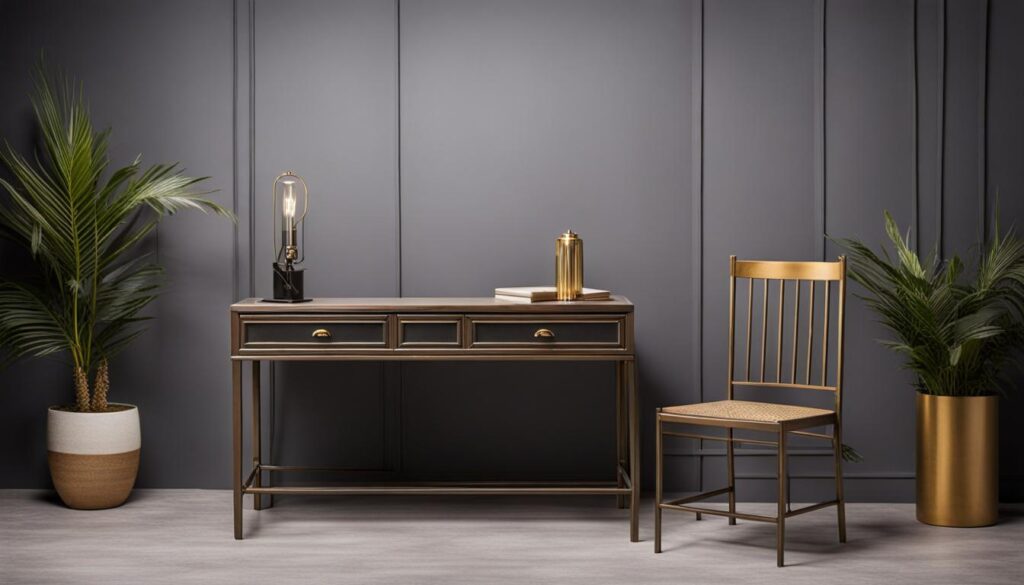
Modern Aesthetics
Metal furniture boasts a sleek and modern aesthetic. With its clean lines and minimalist design, it’s often the choice for contemporary homes. The reflective surfaces of metals like stainless steel or chrome can make a room feel more spacious and open.
Types of Metal
Just as there are various types of wood, metal furniture comes in different materials too. Common choices include steel, aluminum, and wrought iron. Each metal has its unique properties, such as rust resistance or lightweight durability. Your choice should depend on your specific needs and preferences.
Maintenance and Longevity
Metal furniture is known for its durability. It’s resistant to stains, water damage, and most environmental factors. Regular cleaning with a damp cloth is usually sufficient to keep it looking pristine. With proper care, metal furniture can last for many years without losing its shine.
Comparing Durability
Factors Affecting Durability
When comparing the durability of wood vs. metal furniture, several factors come into play. These include:
- Moisture: Wood is susceptible to moisture damage, while metal is generally more resistant.
- Weight: Metal furniture can bear more weight than most wood furniture.
- Impact Resistance: Wood may dent or scratch upon impact, whereas metal is less likely to do so.
Resistance to Wear and Tear
In terms of wear and tear, both wood and metal have their strengths. Wood can develop a charming patina over time, while metal maintains its appearance with minimal change. Your preference for a weathered look or a consistent appearance may influence your choice.
Environmental Considerations
If you’re environmentally conscious, consider the impact of your choice. Wood furniture, when sourced responsibly, can be sustainable. Look for certifications like FSC (Forest Stewardship Council) for eco-friendly wood options. Metal, on the other hand, can be recycled, reducing its environmental footprint.
Comfort and Style
Ergonomics
Comfort is a significant factor when choosing furniture. Wooden chairs and sofas are often lauded for their ergonomic designs, offering excellent lumbar support. However, metal furniture can also be comfortable with the addition of cushions and padding.
Customization Options
Wood furniture provides ample opportunities for customization. You can stain, paint, or carve it to match your personal style. Metal furniture, while limited in customization, comes in a variety of finishes and colors to suit different tastes.
Maintenance and Longevity
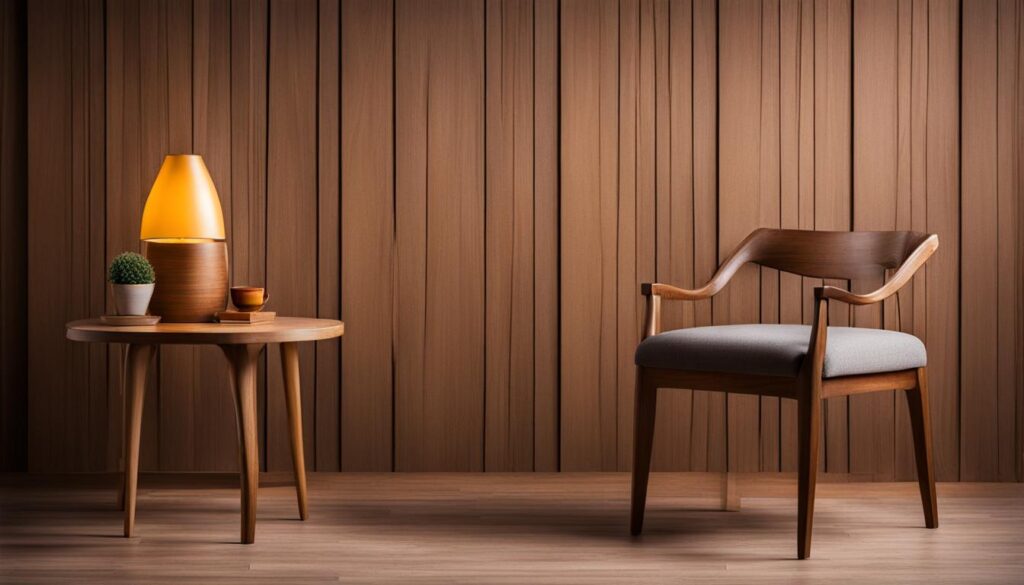
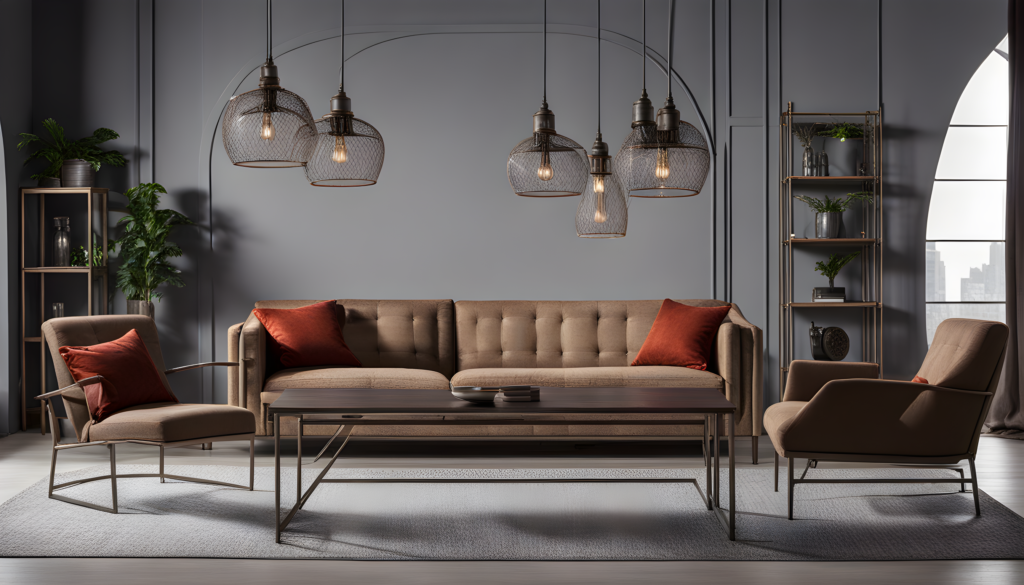
Maintenance: A Key Consideration
When comparing wood and metal furniture, it’s vital to take into account the maintenance required to keep them in top condition. Wood furniture typically demands more attention in this regard. It may need periodic polishing, re-staining, or re-sealing, depending on the type of wood used. However, many people appreciate the way wood develops a rich patina over time, which can add character to your furniture.
On the other hand, metal furniture is relatively low-maintenance. It’s less susceptible to damage from spills, scratches, or pests. A simple wipe-down with a damp cloth is usually enough to keep it looking pristine. The durability of metal means that it can withstand the rigors of daily use with minimal fuss.
Longevity: An Investment Perspective
From an investment standpoint, both wood and metal furniture can be valuable assets. High-quality wood furniture, with proper care, can last for generations. It’s not uncommon to see antique wooden pieces that have been passed down through families, retaining their beauty and functionality.
Metal furniture, known for its durability, can also offer impressive longevity. If you’re looking for furniture that can withstand heavy use and potential relocation, metal might be your best bet. While the aesthetic appeal of metal may change less over time compared to wood, its durability ensures it remains functional.
Customization and Style
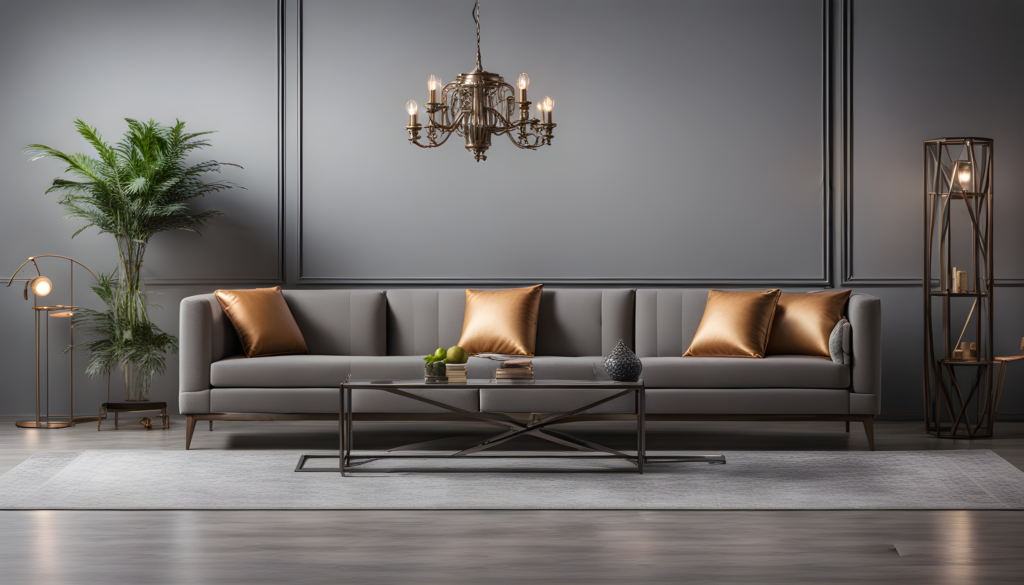
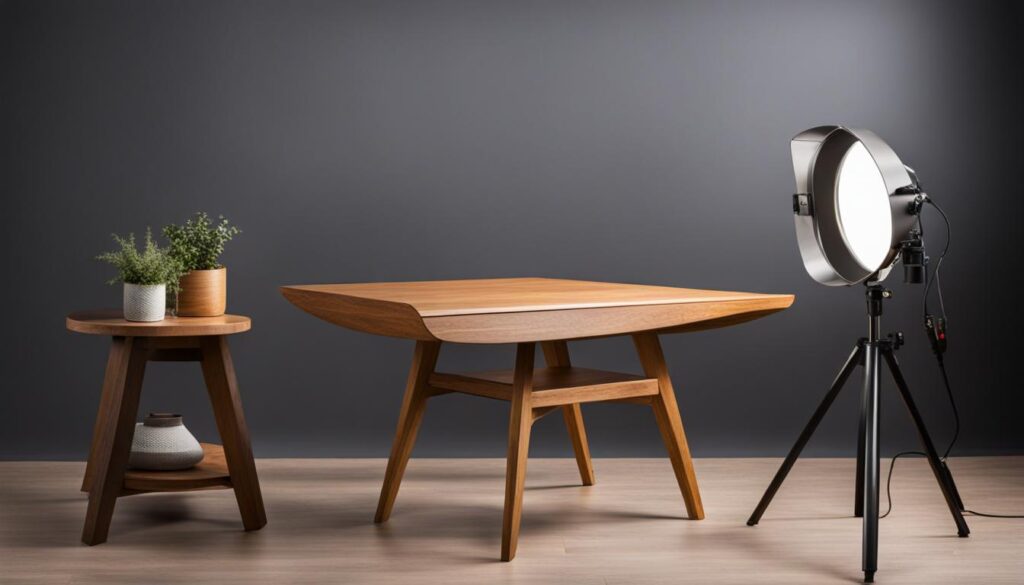
Customization Options
Your furniture should reflect your personal style, and both wood and metal offer customization options to achieve this.
Wood furniture is highly versatile in terms of customization. You can paint, stain, or even carve wooden pieces to match your decor and preferences. This flexibility allows you to adapt your furniture to evolving design trends or to create a unique, personalized look.
Metal furniture, while somewhat limited in terms of surface alterations, comes in various finishes and colors. You can choose from matte, glossy, or textured finishes, making it easier to find metal furniture that complements your interior style. Additionally, metal furniture often has a modern and minimalistic design, which can blend seamlessly with contemporary decor.
Environmental Impact
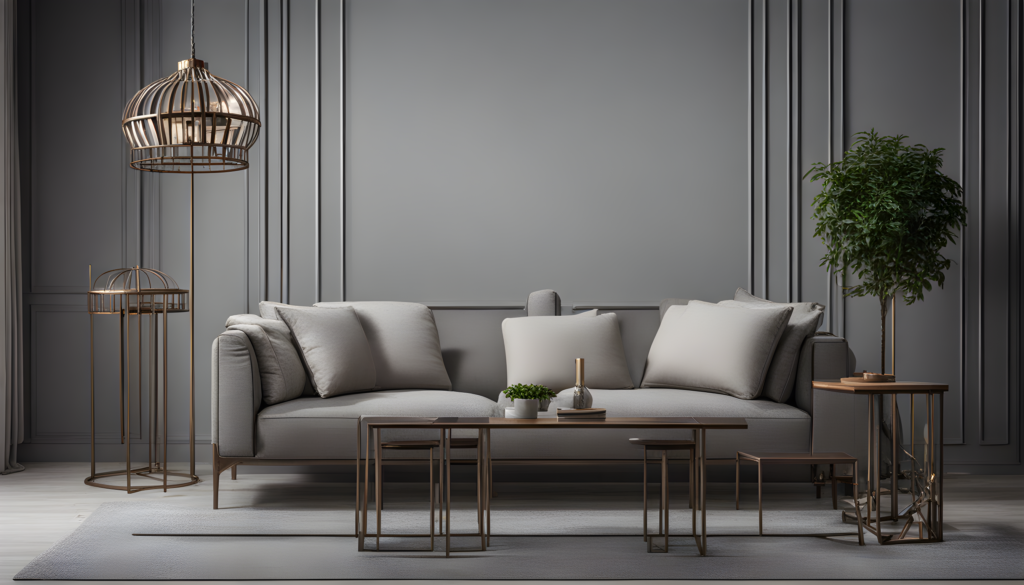
Sustainability of Materials
The environmental impact of your furniture choice is a growing concern for many buyers. Both wood and metal have their eco-friendly attributes.
Wood furniture can be sustainable if sourced responsibly. Look for certifications like FSC (Forest Stewardship Council) to ensure the wood comes from responsibly managed forests. Additionally, consider reclaimed or salvaged wood, which repurposes existing materials, reducing the demand for new timber.
Metal, as a material, is highly recyclable. When you’re ready to part with your metal furniture, it can be melted down and repurposed, reducing waste. Additionally, many metal furniture manufacturers are now using recycled metal in their products, contributing to a more sustainable industry.
Recycling and Reusing
Thinking about the end-of-life cycle of your furniture is an important aspect of sustainability. Metal furniture can be recycled relatively easily, making it an environmentally responsible choice. Many recycling facilities accept metal items, ensuring they don’t end up in landfills.
Wood furniture, even at the end of its life, doesn’t need to go to waste. It can be repurposed, recycled, or even used for firewood, ensuring it serves a useful purpose and minimizes environmental impact.
Cost Considerations
Initial Cost
One of the primary factors that influence the decision between wood and metal furniture is the initial cost. In general, metal furniture tends to be more budget-friendly upfront. This is because the raw materials for metal furniture are often less expensive than the quality hardwoods used in wooden furniture. If you’re working within a tight budget, metal furniture might be the more accessible choice.
However, it’s essential to keep in mind that the initial cost doesn’t tell the whole story. While metal furniture may be cheaper initially, its long-term value and durability should also be considered.
Long-term Investment
When evaluating the cost, it’s crucial to consider the long-term perspective. Wood furniture, if well-maintained, can last for generations, making it a valuable investment. While the upfront cost might be higher, the longevity and timeless appeal of wood can make it a cost-effective choice over time.
On the other hand, metal furniture, while initially cheaper, may need to be replaced sooner. Factors such as rust or corrosion can affect the lifespan of metal furniture. So, while the initial investment might be lower, you may end up spending more in the long run.
Conclusion: Making the Right Choice
In the battle of wood vs. metal furniture durability, there’s no definitive winner. Your choice should align with your lifestyle, preferences, and priorities. Consider factors like aesthetics, maintenance, cost, and environmental impact when making your decision.
Remember that both wood and metal furniture have their unique charms and advantages. It’s all about finding the perfect balance between durability and style for your home.
So, whether you choose the warmth of wood or the durability of metal, you’re sure to make a choice that suits your unique taste and enhances your home’s aesthetics.
In conclusion, when it comes to furnishing your space, the right decision isn’t just about durability; it’s about finding the perfect balance between functionality and style. Enjoy your journey of furnishing your home with the material that resonates with you the most!
FAQs: Your Burning Questions
What’s the lifespan of wood furniture compared to metal?
The lifespan of wood furniture can vary depending on the type of wood and how well it’s maintained. Generally, high-quality wood furniture can last for decades, even generations, if properly cared for. Metal furniture, due to its durability, can also have a long lifespan, often rivaling that of wood. However, it’s essential to consider factors like rust and corrosion, which can affect metal over time.
Can I use wood furniture outdoors?
Using wood furniture outdoors is possible, but it requires specific maintenance and precautions. You should opt for woods that are naturally resistant to moisture and insects, like teak or cedar. Regular sealing and protective coatings are necessary to prevent moisture damage. Additionally, it’s advisable to store wood furniture indoors during harsh weather conditions.
Do metal chairs get too cold in winter?
Metal chairs can indeed become quite cold in winter, especially in regions with frigid temperatures. However, this can be mitigated by using cushions or seat covers. Some metals, like aluminum, are less prone to retaining extreme cold temperatures compared to others, such as wrought iron.
Is wooden furniture more susceptible to pests?
Wooden furniture can be susceptible to pests like termites or beetles, primarily if not properly treated or maintained. To prevent pest infestations, it’s essential to choose pest-resistant wood types and use protective finishes. Regular inspections can help identify and address any issues before they become significant problems.
Are there eco-friendly options in metal furniture?
While metal itself is recyclable and environmentally friendly, the eco-friendliness of metal furniture can depend on factors like the manufacturing process and coatings used. Look for metal furniture made from recycled materials and finished with low-VOC (volatile organic compound) paints or coatings. This ensures a more sustainable choice.




